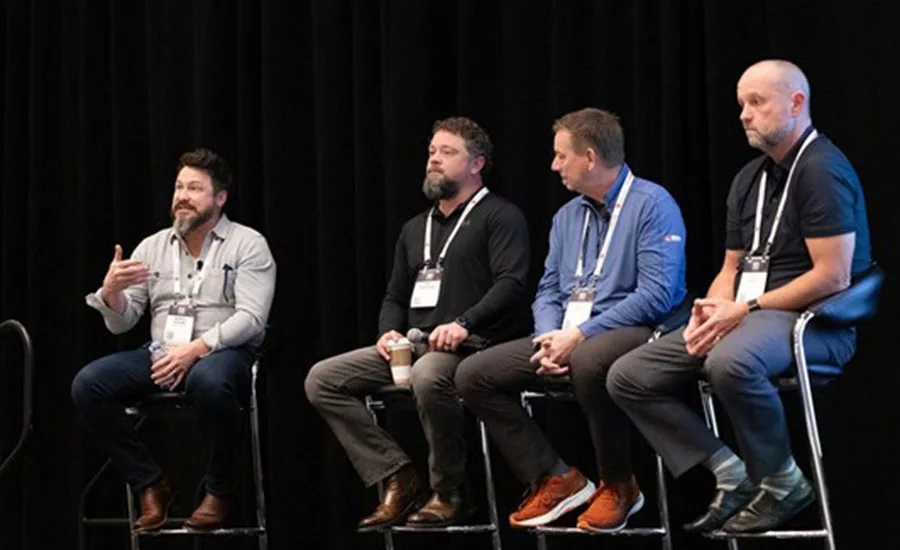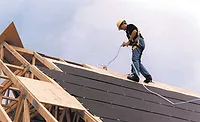Roofers Take More Risks When Using Additional Safety Gear

Image by Russell Holden from Pixabay.
Roofing contractors know that safety measures are important, so adding more safety gear means there will be less accidents, right? New research is suggesting otherwise.
Despite the efforts of many roofing contractors stepping up their safety, data shows workplace injuries resulting in death are only increasing year after year. Civil engineers and psychologists looked into the matter, and according to their findings, roofing contractors tend to take more risks when they feel protected by strict safety measures and equipment. As a result, workers are less safe overall.
It may sound like an obvious conclusion, but according to researchers, no study has empirically examined the risk-taking behaviors of workers as a function of the number and type of safety interventions in place. They believed the cause might have to do with a psychological phenomenon known as “risk compensation,” wherein people are less careful when they feel more protected.
For example, football players experienced more head injuries after hard-shell helmets were introduced because they had a false sense of security and made more dangerous tackles.
To test their suspicions, the researchers created an immersive mixed-reality environment — combining virtual reality and passive haptics — to simulate a roofing activity. They then recruited student volunteers with at least a year of construction experience and trained them on how to install roofing shingles.
As Engineering News-Record explains, students were then split into groups and assigned one of three levels of safety equipment. Some wore only personal protective equipment (hard-hat, gloves and knee-pads) but no fall protection; some wore PPE and a fall-arrest system; and a third group had PPE, a fall-arrest system and a perimeter guardrail. The students also wore virtual reality glasses with embedded location sensors.
The students went to work on a two-story suburban home, which was actually a sloped roof assembly on a flat surface. Elements like noise and wind were simulated via virtual reality.
The results, which appear in the Journal of Construction Engineering and Management, showed that providing more safety interventions produced a sense of invulnerability among participants. This false sense of security increased their risk-taking behavior by up to 55%. Participants stepped closer to the roof edge, learned over the edge, and spent more time exposing themselves to falls.
“Although this study used students as unskilled roofing workers, it provides an initial empirical understanding of how more safety protections might implicitly signal workers to take additional risks — an effect of risk compensation,” the study states.
Sogand Hasanzadeh, lead author and a doctorate candidate at Virginia Tech when the initial study was carried out, told Engineering News-Record that workers may fall prey to cognitive bias as shortcuts that lead to risky decisions. If that happens, "no matter how many safety prevention measures are in place, they will not be enough."
"Workers need to be aware that having protection doesn’t mean they are fully protected," she said.
The study’s authors say their findings could significantly influence how the construction industry approaches the development and implementation of safety interventions to offset risk compensation.
Looking for a reprint of this article?
From high-res PDFs to custom plaques, order your copy today!





